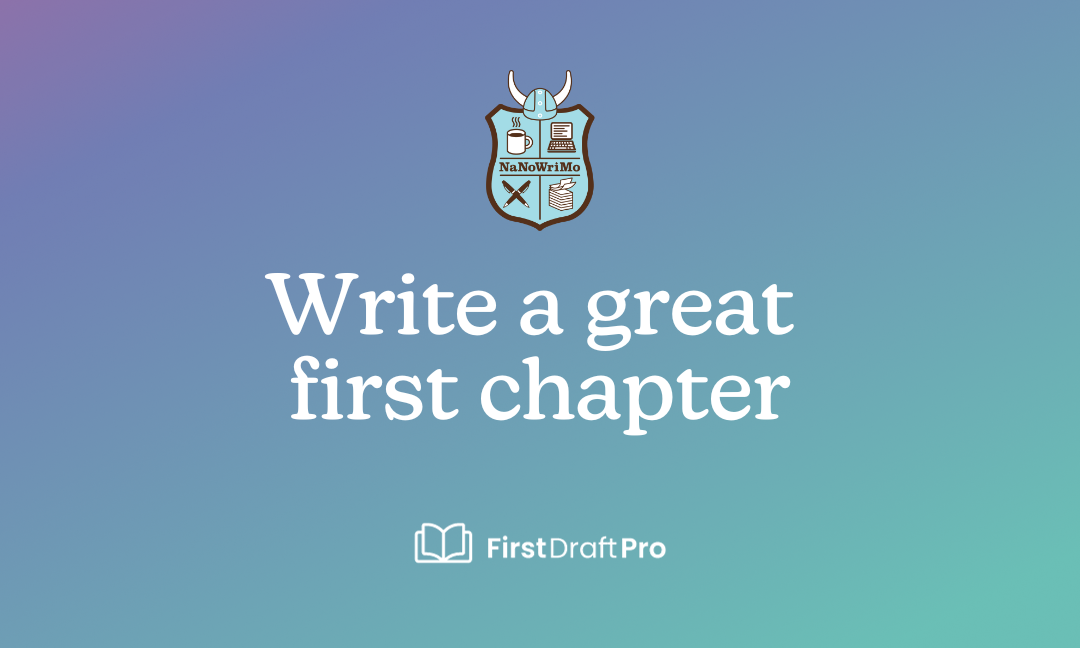A guide to Nanowrimo: 8-day plan to get through Act 1

This is your complete guide to winning Nanowrimo. We're breaking down the classic three-act story structure across a 50 000 word novel, and giving you a clear checklist of what you should be covering each day to write a compelling story and meet your wordcount goal.
We've broken the guide into three sections, one for each act. This is Act 1. You can find Act 2 here and Act 3 here.
Let's start with some math, while we're all still alert. You're aiming to complete a 50 000 word novel in 30 days. According to the classic three-act story structure, Act 1 is about 25% of your story. So this means we're aiming for 12,500 words over about 8 days.
Act 1 is the setup of your story. It should cover your exposition, inciting incident, the "debate", and introduce your first main plot point. Let's get started...
Your goal
From 1 Nov — 8 Nov: You are taking your characters from their current day-to-day life, to their decision to go after their external goal. You'll end the week with your characters feeling like they have purpose and drive. They are motivated.
Exposition
You will spend 5,000 words on exposition. That means the first three days of Nanowrimo are all spent on setting the stage for your story.
Nov 1 | Set-up [0–1667 words]
- Grip your reader right from the start by opening with some action
- Introduce your protagonist in their everyday life
- Show us what their world looks like
- Introduce your protagonist's external goal – give us a sense of what is important to them
- Hint at the broken thing in your protagonist's world – the thing that needs fixing (this is the central conflict)
- Hint at the thing that is going to change for them later, and which will subsequently force them to accept the call to adventure (that thing is called plot point 1).
Nov 2 | Set-up [1667–3334 words]
- Expand on your protagonist's external goal – show us why this is important to them, and make us care about them getting it
- Introduce your protagonist's internal goal or establish a flaw in the way they see the world (a thing that will need to shift throughout the story)
- Further establish your protagonist as three-dimensional (they must have flaws, desires, problems, and a unique personality)
Nov 3 | Set-up [3334–5000 words]
- Show us a closer look at the broken thing in your protagonist's world (the central conflict)
- Set up the conflict between the protagonist's internal and external goal. They will need to be forced to choose between these goals later on, so it's important that you foreshadow this
- Leave us with a clear picture of who the protagonist is now, so that we can clearly see how they have changed by the end of the story (this is the first beat of their character arc)
Catalyst / Inciting Incident
You'll spend 2500 words setting-up the catalyst, and your inciting incident will happen at around 7500 words.
Nov 4 | Catalyst [5000–6668 words]
- Set up your inciting incident by first establishing something important to the protagonist that the inciting incident will threaten. This will be the ultimate reason they decide to do something following the inciting incident, so it's important to first show us what the stakes are.
- Use this opportunity to make us like your protagonist even more: add humor, and show their kindness/soft spot.
- Start to show us signs that the inciting incident is coming, and that all may not be well (you'll write the actual event tomorrow).
Nov 5 | Catalyst [6668–8335 words]
- Your inciting incident will happen at around 7500 words, and you'll use around 850 words to unpack it. This is the event that drives your protagonist out of their comfort zone. It must be something that cannot be resolved on its own, and it must require direct intervention.
- It should grip your reader's attention. After this point, they must not want to turn back. Your readers should already like your protagonist, and want to see them win.
Debate
Your protagonist will consider what to do about the catalyst, and you'll wrap up Act 1 by introducing your first plot point.
Nov 6 | Debate [8335–10,000 words]
- Ultimately they will have no choice, but your protagonist may fight against the inciting incident, and decline the call to adventure.
- Present how this event impacts the protagonist and why they must step into action.
- Present how the event challenges your protagonist's internal conflict.
Nov 7 | Debate [10,000–11,667 words]
Consequences are the only reason anyone does anything. The thing that will motivate your protagonist to accept the call is going to be both the potential positive and potential negative consequences of the inciting incident.
- Establish the consequences of success and the consequences of failure. Both will be important to motivate your protagonist.
- Something changes for your protagonist, and they realise that they cannot decline the call any longer. The thing that changes must make it personal for them.
- This thing that changes for them is called plot point 1, and you would have already foreshadowed this on day 1.
Nov 8 | Debate [11,667–13,336 words]
- A mentor might provide your protagonist with some of the tools or training they need to accept the call.
- Refresh your reader's memory of the central theme or question of the story.
- Have your protagonist accept the call to adventure, either willingly or begrudgingly.
All rules are made to be broken, so go ahead and break them! It's your story, after all. Feel free to take the advice that resonates with you and discard anything that doesn't.








